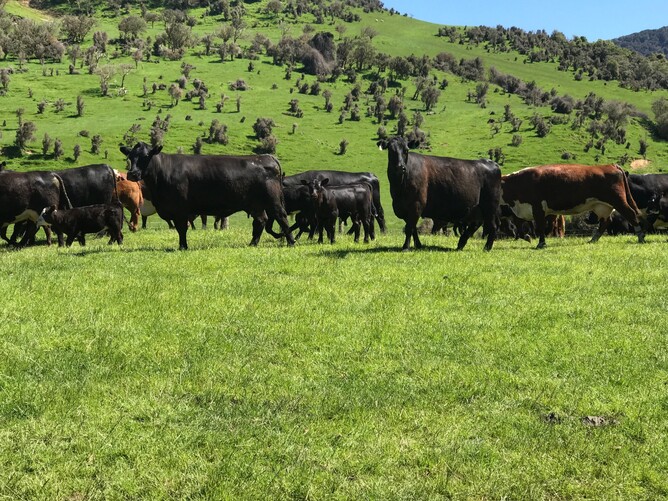As weaning approaches, let's double down on how to get the most out of your beefies.
Our beefies have had a lot to do this season to manage our pasture quality! As we work towards weaning time, there are a few things to plan for to keep them in tip-top shape.
Trace elements
The most important ones are selenium and copper.
Selenium - we have seen a lot of low selenium in sheep over the past 12 months, owing to changes in fertiliser use and grass growth patterns. If you have needed to supplement your sheep, then your cattle will need it too. There are long and short-acting options to suit your system.
Copper - we don't often test copper levels in beef cattle but, when we do, they are often low. Low copper can effect young stock's growth and effect reproduction in M/A cows. Anything weird that's going on in beef cattle may be attributed to low copper levels.
Testing for selenium and copper is pretty easy and can be done at any time. We are happy to give you an estimate on price, if you are keen.
Internal parasites
On traditional sheep and beef farms, there are normally a lot more sheep parasites to worry about and the cattle won’t pick up too many. Some calves get a drench before, or around, weaning but, on the whole, their burden will often be relatively low.
At this time of year, beef breeders will generally have peak cattle numbers on-farm. They are a great bonus for mopping up sheep parasites, so make the most of them on your lamb grazing areas. Any way you can integrate cattle on sheep pastures is beneficial, so mix them up however best suits your system.
However, if you are a finisher of beef or dairy/beef cattle, things can be quite different. Internal parasites can be a real issue and need management.
Grazing systems where there are ‘young cattle blocks’ are at great risk of cattle drench resistance. There is well known drench resistance in cattle parasites and we need to become more aware of this. All of the sheep parasite management practices are also true for cattle (see our Golden Rules of parasite management article).
We can do in-clinic faecal egg counts (FECs) on cattle with our Parasight machines, available in Gore, Winton and Tapanui.
Oral drenches are the most effective at killing parasites. Some farmers have become very efficient at drenching with the cattle drenching hooks. The next best option is injection, followed by pour-ons, which have variable absorption/kill rates.
External parasites
If lice are a problem, then two treatments are required to kill all stages of the lifecycle. These treaments should be given 2-3 weeks apart.
Clostridial diseases
Losing any stock to clostridial disease is always fustrating. Covexin10 offers full protection for cattle, with coverage for a couple of extra strains (than a traditional 5in1) that can cause issues for fast growing cattle.
I am seeing lots of lovely clover paddocks and fattening crops around this year, which will increase the incidence of clostridial diseases in all stock. Prevention is the only approach - there is no cure.
BVD - Bovine Viral Diarrhoea
BVD effects reproduction and growth in young stock. It's important to know what your status is and how to manage BVD. A simple test of 15 animals at scanning time is a great starting point.
As a minimum, test your heifers and ensure your bulls are fully vaccinated each year before mating.
Pregnancy scanning
Pregnancy scanning can be done any time from 6 weeks after the bulls are removed. If there is a benefit for you to know when your heifers will calve, then let us know early and we can schedule our scanning to age scan your pregnancies.
Give us a call to book in your scanning and we can always do some trace element and BVD testing at the same time. We are happy to work in with TB testing if needed - just keep us in the loop with bookings.

